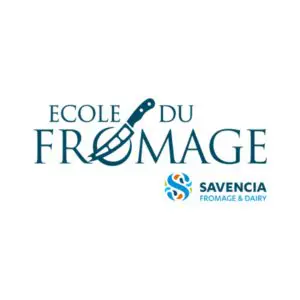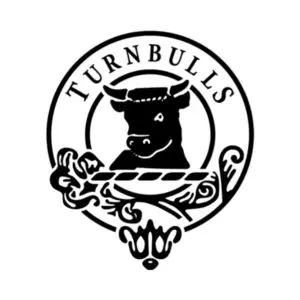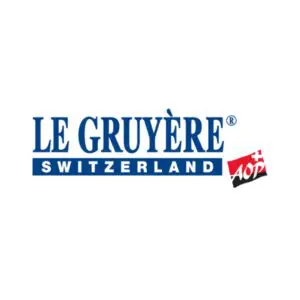L’École du Fromage by Savencia presents: The Sensorial Analysis applied to French Cheese Tasting.
Sensorial analysis is a scientific process which allows us to measure, assess and interpret the characteristics perceived by the senses.
GUIDE TO TASTING CHEESE
Learn about the four stages of tasting cheese and how to take tasting notes with this definitive guide to tasting cheese.
Teachers of L’École du Fromage by Savencia: Noemie Richard, Cheese education manager and Philippe Dumain, sensorial analysis expert and will take us through the history, definition, and application using two iconic French cheeses: Le Rustique Camembert and Saint Agur Blue cheese.


The Perception of Cheeses
Aristotle was the first to use the word “sense” in his book “soul treat”. Then, during the renaissance, Leornardo Da Vinci highlighted the value of the senses: “every truth no perceived by senses is a “prejudicial truth”. In 1824, JM Eugene Chevreul offered a classification of perceptions as “sensibility of touch, smell and taste”. He was the first in using the concept of “sensorial analysis”. The first official sensorial analysis of food was during the Second World War with the rations developed for the US army GI’s. “K” rations. Doctor Keys from Minnesota University had to create a menu delivering 3200 calories in only 871g. This menu was tasted by 6 soldiers and their feedback captured: the sensorial analysis was born!
Sensorial analysis
Sensorial analysis has many definitions, the one preferred by Philippe Dumain is “A precise description of a product realised by a group of trained people using their five senses and describing a product with a normalised and shared vocabulary”. Today it is used for various applications: product description, recipe formulation, quality control… Although there are new scientific tools (electronic nose for example), humans are still the most complete measurement tool to analyse and describe the organoleptic characteristics of a product.
Our five senses are all stimulated in the cortex of the brain and transformed into neural signals. These signals are then stored as a “sensorial memory”. Everything we taste adds to our portfolio of “sensorial memories”. Someone who doesn’t like a product first time will not want to taste it again by only seeing it, because their sensorial memory is activated. Likewise, food can connect us to nostalgic times in our childhood and bring back happy memories.
The sensorial analysis must follow a logical scheme where the vocabulary must first be agreed within the panel. Tasting is completed in 4 phases in logical order using the senses. To avoid confusion, use the same technique as you would on a first date with someone you like: first sight, then smell, touch and taste (a kiss!)
Noemie and Philippe have chosen Le Rustique Camembert and Saint Agur, 2 big French icons, to guide us through this process. Both are cow’s milk cheeses and offer very different, incredible flavours. Let’s activate the 5 senses and recognize the cheese characteristics:
Le Rustique

1. The visual phase allows us to assess the aspect of a product (internal and external) and to get some texture information.
- White and rind
- Yellow Paste
- Lactic heart and creamy paste
2. Touching phase (with the fingers) will give a first assessment of the rind and the texture by applying pressure on the cheese. Moisture, viscosity, firmness, elasticity are descriptors common at this stage.
- Dry and slightly rough rind
- Soft texture and low elasticity
3. Smelling phase is the first part of the aromatic wheel discovery (it will be completed with the taste phase)

Garlic, Mushroom and cowshed notes

4. The mouth phase gathers 3 kind of information:
Texture: during the chewing, mechanical receptors will transmit sensations to the brain such as firmness, the adherence, friability. We will also feel the geometric elements which relate to the shape and distribution of the small particles of the product (graininess, flouriness etc)
- Creamy and slightly melting
- Slightly “gummy”
- Smooth
Aromas are detected by the “retro nasal” circuit, they are released by chewing. With Camembert Le Rustique we detect:
- Sweet
- Salty
- Bitter
Saint Agur

1. The visual phase allows us to assess the aspect of a product (internal and external) and to get some texture information.
- Velvet blue rind
- White-ivory paste with blue-green veins and velvet caverns
- Creamy paste
2. Touching phase (with the fingers) will give a first assessment of the rind and the texture by applying pressure on the cheese. Moisture, viscosity, firmness, elasticity are descriptors common at this stage.
- Wet and smooth rind
- Very soft texture totally deformable
3. Smelling phase is the first part of the aromatic wheel discovery (it will be completed with the taste phase)


4. The mouth phase gathers 3 kind of information:
Texture: during the chewing, mechanical receptors will transmit sensations to the brain such as the firmness, adherence, friability. We will also feel the geometric elements which relate to the shape and distribution of the small particles of the product (graininess, flouriness etc)
- Highly Creamy and melting
- Adherence medium
- Flour particles
Tastes are perceived by our tongue receptors on our papilla cells. There is no universal cartography of the taste perception, each culture and person will have their own individual interpretation. The 5 main tastes with receptors identified are: Sour (acid citric molecule), bitter (caffeine and Quinine), Salt (Sodium), Sweet (glucose) but also Umami (monosodium glutamate). With St Ague we dedect:
- Salty
- Sweet
- Sour
GUIDE TO TASTING CHEESE
Learn about the four stages of tasting cheese and how to take tasting notes with this definitive guide to tasting cheese.
Topic: Tasting Cheese























